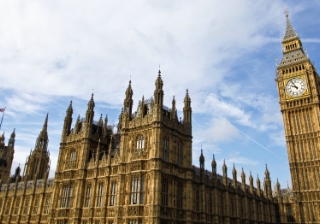Buy-to-let arrears rising at faster rate than residential
Despite rising buy-to-let arrears, it’s still more common for residential homeowners to struggle.

"It’s striking that buy-to-let landlords are becoming less shielded over time from the economic conditions, suggesting they are unable to entirely recoup their lost income in the form of higher rents."
Cases of arrears in the buy-to-let sector are worsening at a faster rate than for homeowners, according to new analysis by Octane Capital.
Octane Capital analysed industry figures on the number of mortgages that have fallen into arrears by 2.5% or more of the mortgage balance, comparing the split between the buy-to-let and residential sectors and how each compares to the pre-pandemic market.
Cases of buy-to-let arrears of more than 2.5% of the loan amount have risen by 42.6% in four years, rising from 4,930 in Q1 2019 to 7,030 in Q1 2023.
Over the same period cases of arrears for homeowners of more than 2.5% have actually declined by 8.6%, from 83,870 in the first quarter of 2019 to 76,630 in the equivalent quarter this year.
It’s still more common for residential homeowners to struggle however.
In the first quarter of this year there were some 76,630 homeowners in arrears of 2.5% or more of their mortgage balance. While small, this accounted for 0.87% of total homeowner loans outstanding.
This proportion has hovered around this mark for the past four years, peaking at 0.94% during the first quarter of 2021.
In contrast, the number of landlords in arrears of 2.5% or more of their mortgage balance totalled 7,030 during Q1 of this year and accounted for 0.34% of total outstanding buy-to-let loans.
However, while this proportion is more than half that of owner-occupiers, it is the highest total number seen since Q1 2019, as well as the highest proportion of all buy-to-let loans, with the exception of Q4, 2022, when it also sat at 0.34%.
CEO of Octane Capital, Jonathan Samuels, commented: “It’s certainly a worrisome time for the property market, with mortgage rates and high inflation stretching people’s affordability to the limit.
“It’s striking that buy-to-let landlords are becoming less shielded over time from the economic conditions, suggesting they are unable to entirely recoup their lost income in the form of higher rents.
"The research suggests levels of arrears are in no way out of control however, so there’s no need to be too doom and gloom about the state of the housing market.
"The Chancellor’s mortgage forbearance measures are designed to reassure people who are worried about the impact of rising rates, and it’s welcome these measures have been introduced before the horse has bolted - cases of arrears need to be tackled before people fall into trouble.
"We’d still recommend mortgage holders to keep paying their loans as normal unless they are in need of emergency action, as measures like interest-only loans will only result in higher payments down the line to compensate.”

Breaking news
Direct to your inbox:
More
stories
you'll love:
This week's biggest stories:
Budget
Budget: Government introduces mansion tax on high-value homes

Budget
Budget: Government introduces £2,000 salary sacrifice cap

Lifetime Isa
Budget: Lifetime ISA to be scrapped in favour of new first-time buyer ISA

Budget
Budget: Property income tax to rise by 2%

FCA
Firms required to report complaints involving vulnerable customers under simplified FCA rules

Santander
Santander joins mortgage price war with new rates from 3.51%
